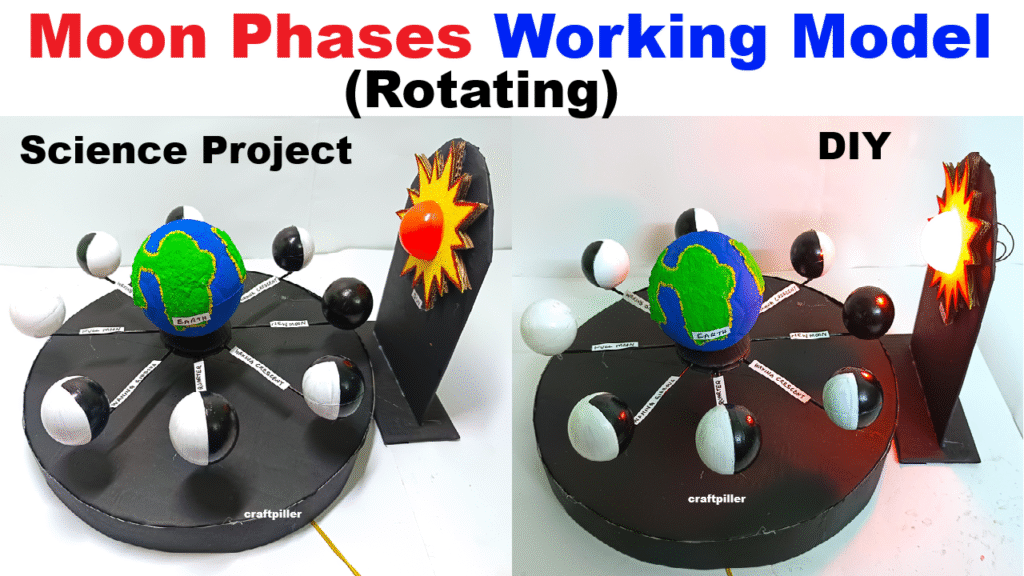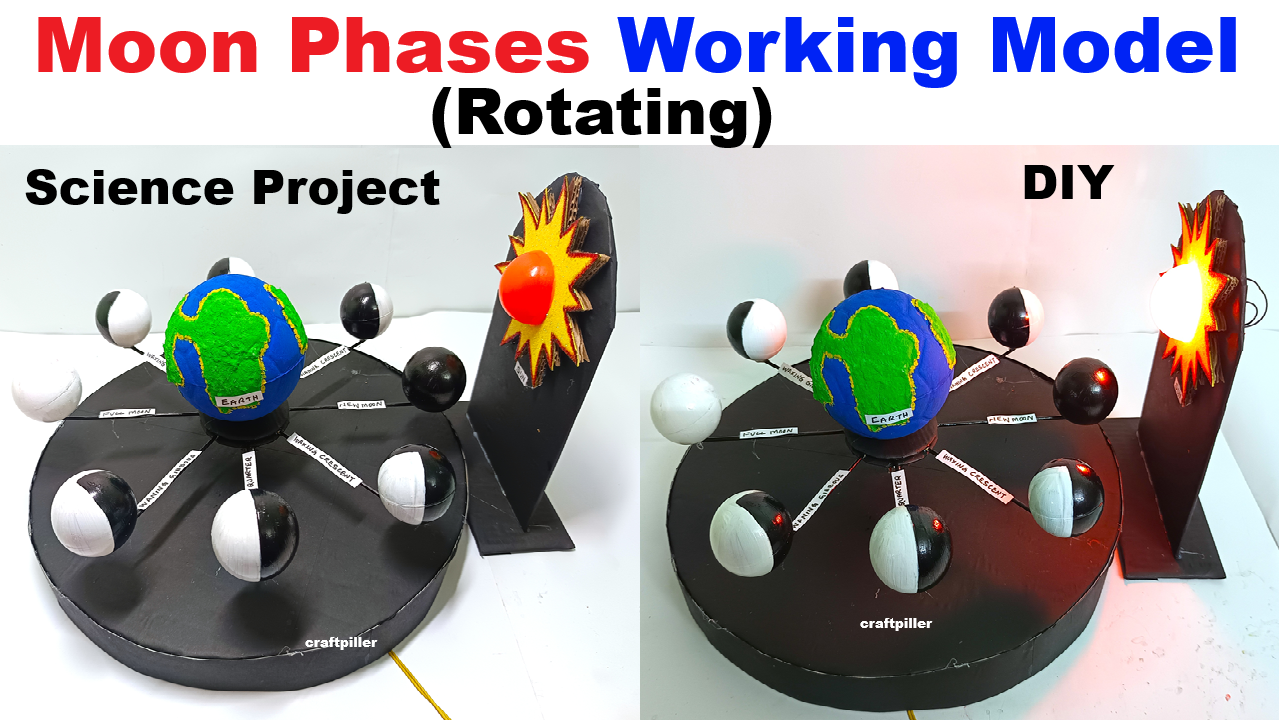Aim / Objective:
To demonstrate the phases of the Moon and explain how the positions of the Moon, Earth, and Sun create different lunar phases as seen from Earth.

Materials Required:
- Plastic balls of different sizes (representing Sun, Earth, Moon)
- Slow DC motor
- Wooden sticks, skewers, or cardboard rods
- Plastic or foam balls for the Moon (can be colored for each phase)
- Glue, tape, or adhesive
- Cardboard or wooden base
- Marker or paint (to label Sun, Earth, Moon)
Working Principle:
- The Moon phases occur due to the relative positions of the Sun, Earth, and Moon.
- As the Moon revolves around the Earth, the portion illuminated by the Sun changes, causing new moon, crescent, half-moon, gibbous, and full moon phases.
- The slow motor rotates the Moon around the Earth to simulate its orbit, while the Sun remains stationary.
Procedure:
- Fix the Sun ball on the base as the stationary light source.
- Mount the Earth ball on a stand connected to the slow motor to allow rotation around the Sun.
- Attach the Moon ball to a smaller rod or ring around the Earth to revolve around the Earth.
- Color or mark the Moon balls to represent different phases (New Moon, Crescent, Half, Gibbous, Full).
- Turn ON the motor to rotate the Earth and Moon slowly, showing changing positions and resulting phases of the Moon.
- Observe how the illuminated part of the Moon changes as it revolves around the Earth.
Observation:
- As the Moon revolves, the visible illuminated portion changes.
- Students can observe all the main Moon phases: New Moon, Waxing Crescent, First Quarter, Waxing Gibbous, Full Moon, Waning Gibbous, Last Quarter, and Waning Crescent.
- The model clearly shows the relationship between the Moon’s position and its phase.
Conclusion:
The model effectively demonstrates the mechanism of Moon phases.
It helps students understand how the relative positions of the Sun, Earth, and Moon cause the changing appearance of the Moon as seen from Earth.
This visual and rotating model makes it easier to grasp astronomical concepts for exhibitions and classroom learning.

